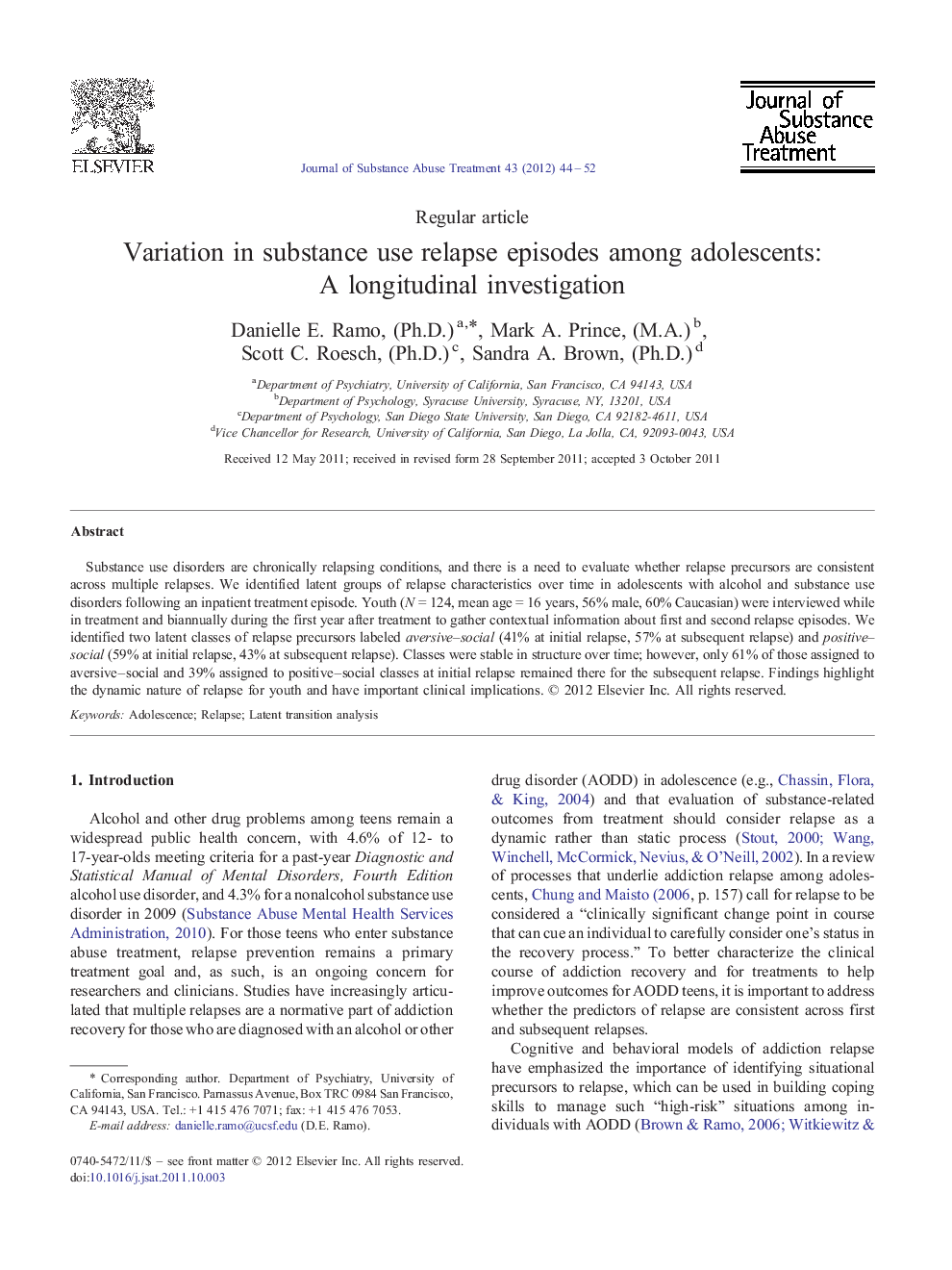| Article ID | Journal | Published Year | Pages | File Type |
|---|---|---|---|---|
| 328477 | Journal of Substance Abuse Treatment | 2012 | 9 Pages |
Substance use disorders are chronically relapsing conditions, and there is a need to evaluate whether relapse precursors are consistent across multiple relapses. We identified latent groups of relapse characteristics over time in adolescents with alcohol and substance use disorders following an inpatient treatment episode. Youth (N = 124, mean age = 16 years, 56% male, 60% Caucasian) were interviewed while in treatment and biannually during the first year after treatment to gather contextual information about first and second relapse episodes. We identified two latent classes of relapse precursors labeled aversive–social (41% at initial relapse, 57% at subsequent relapse) and positive–social (59% at initial relapse, 43% at subsequent relapse). Classes were stable in structure over time; however, only 61% of those assigned to aversive–social and 39% assigned to positive–social classes at initial relapse remained there for the subsequent relapse. Findings highlight the dynamic nature of relapse for youth and have important clinical implications.
